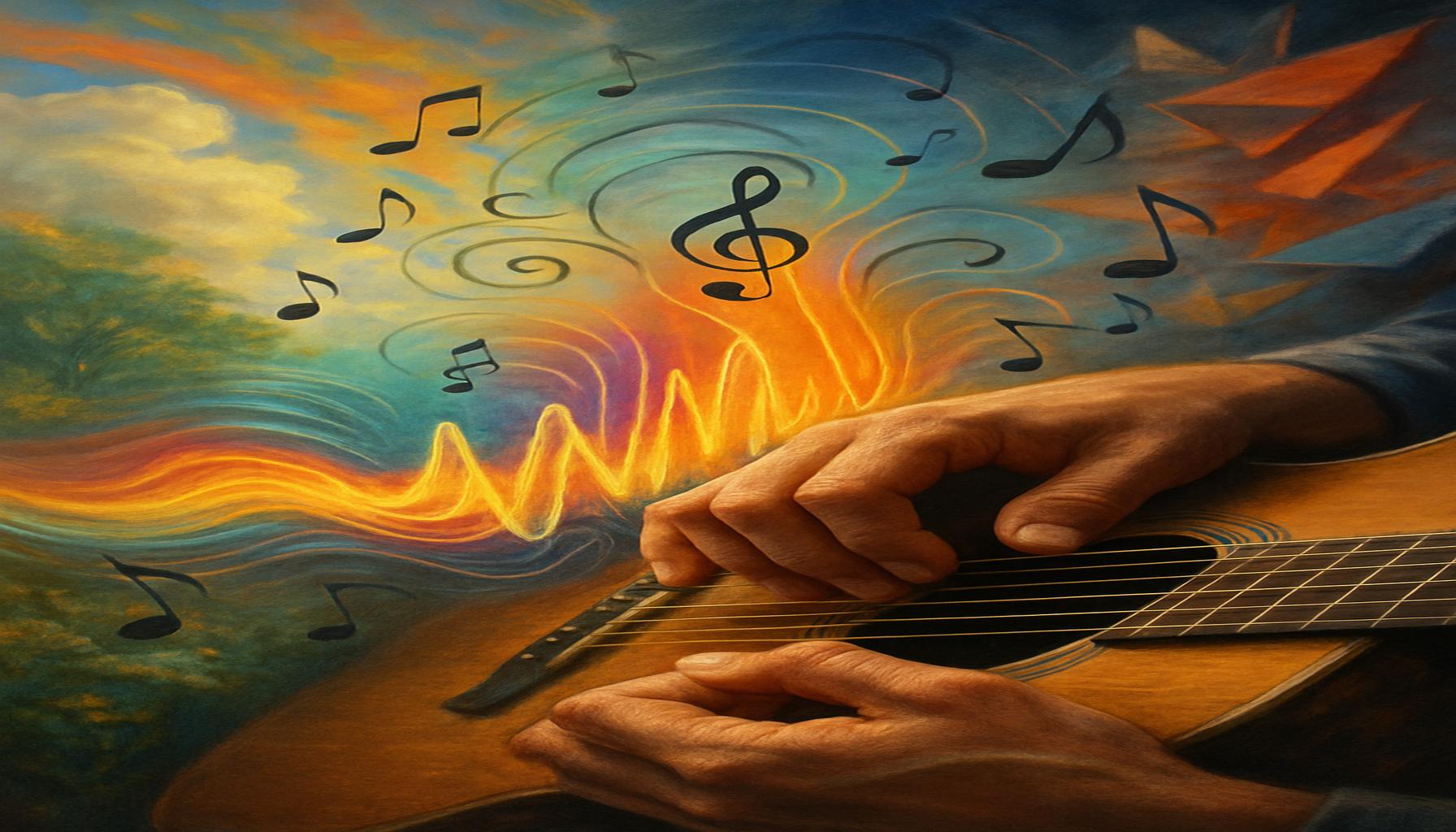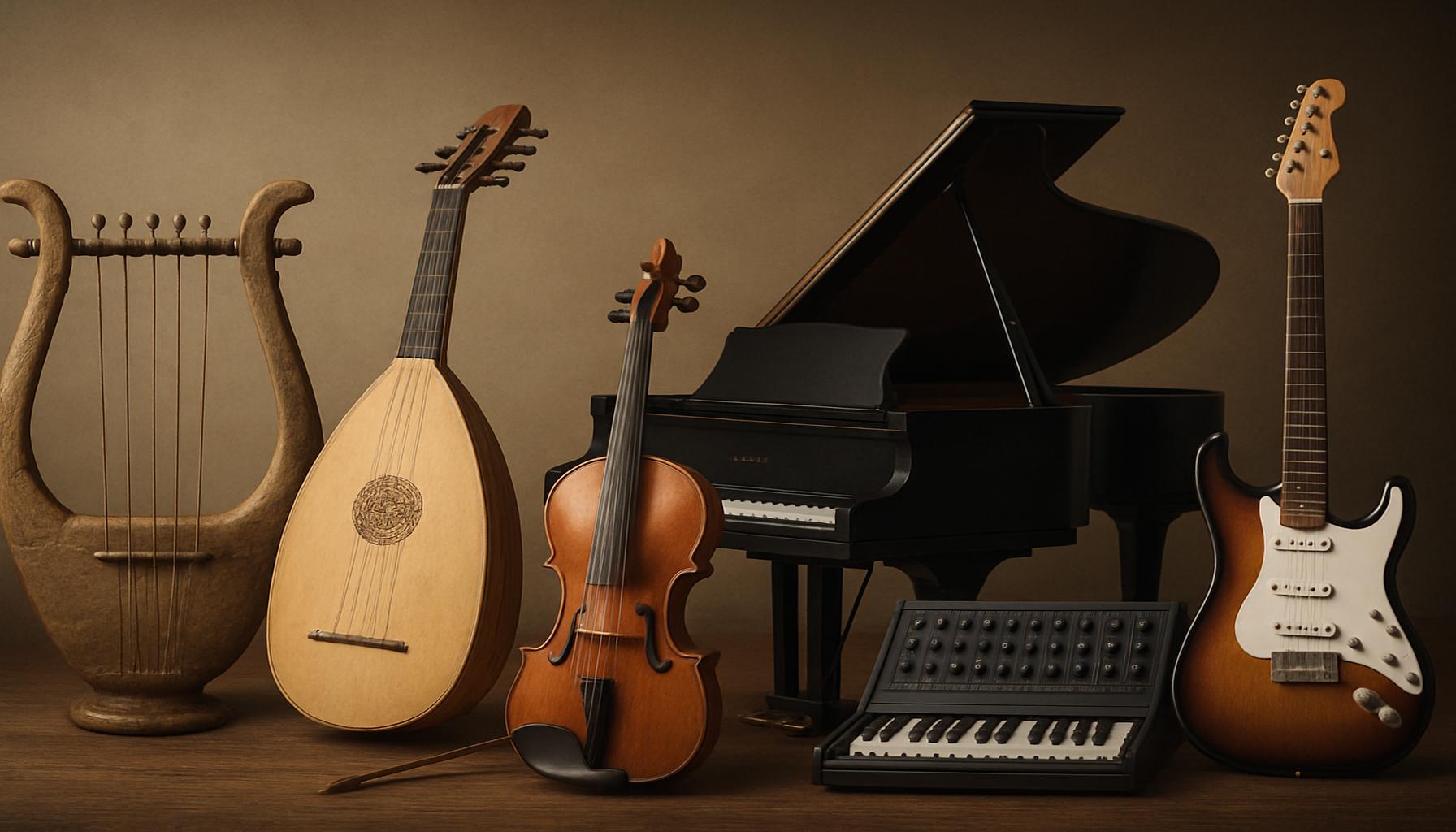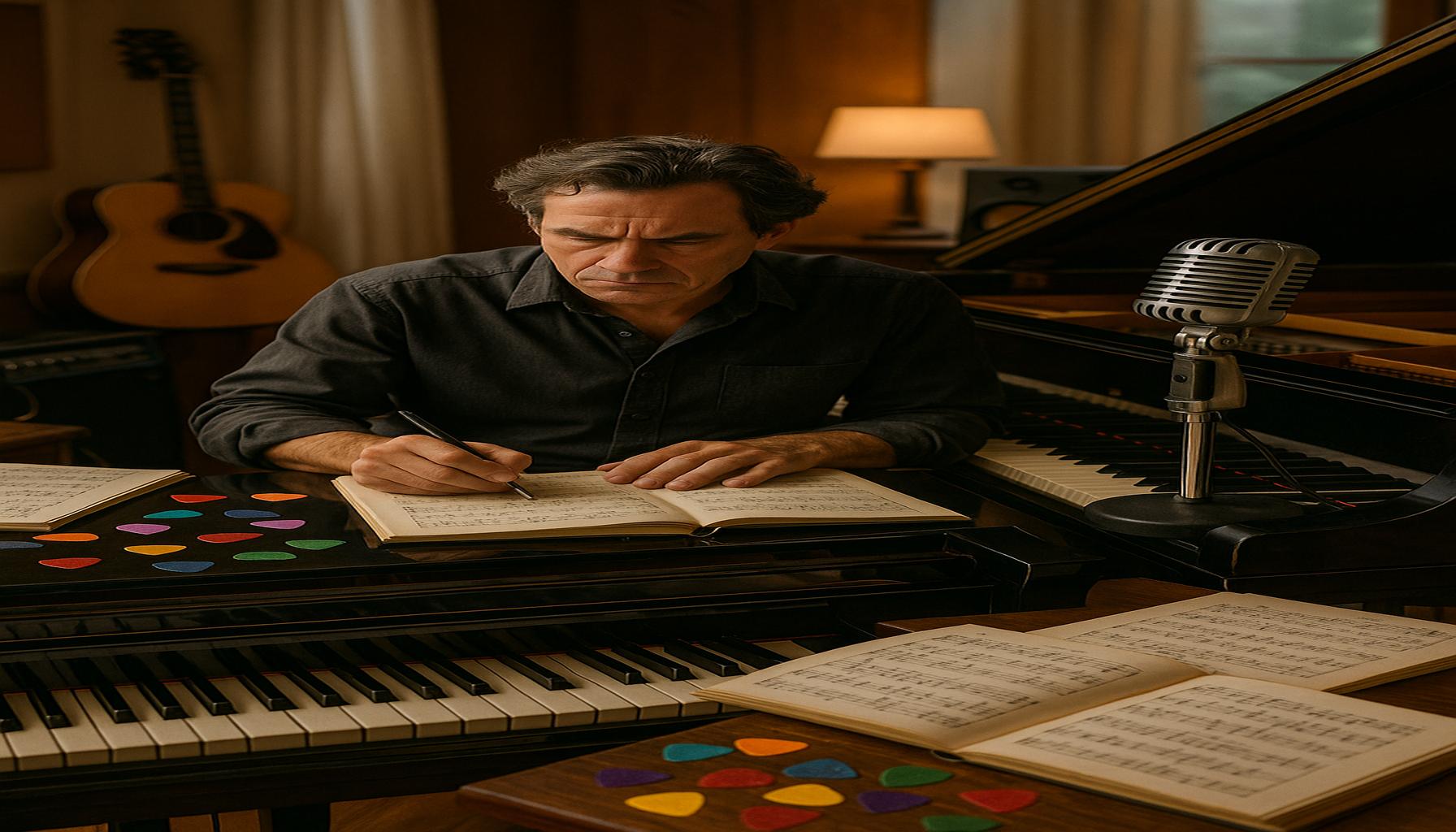The Sensory Experience of Music: How Rhythms and Melodies Affect Our Senses and Emotions

Unlocking the Power of Sound
Every note and beat carries a profound impact on our senses and emotions. Music is more than just a collection of sounds; it is a rich sensory experience that can transform our mood and perception. When we listen, we connect deeply with rhythms and melodies that resonate within us, often reflecting our inner states or external circumstances.
The Science of Sound
Recent studies reveal how music can influence our brain chemistry and physiological responses. It actively affects:
- Mood Regulation: Uplifting tunes, such as those found in pop or upbeat indie music, can significantly boost happiness. For instance, tracks like Pharrell Williams’ “Happy” create a feel-good atmosphere, spurring listeners into a more positive frame of mind.
- Cognitive Performance: Certain melodies, particularly classical compositions like Bach’s or Mozart’s, have been shown to enhance concentration. In fact, many students listen to these genres while studying, tapping into the ‘Mozart effect’ which posits that listening to certain types of music can temporarily boost cognitive performance.
- Emotional Connection: Lyrics often evoke memories and personal stories, drawing listeners closer to the music. For example, songs that tell stories of love, loss, or triumph often create a shared emotional experience that resonates with listeners from diverse backgrounds.
In the United States, music is interwoven into the fabric of daily life, from lively street performances in vibrant cities like New Orleans to soulful gatherings at local venues. Different genres, such as jazz, country, and hip-hop, provide unique auditory experiences that awaken various sensory responses. The rhythmic pulse of drums can ignite a sense of passion, while the soothing sounds of a piano may evoke tranquility and introspection.
American music culture is a melting pot, with influences from around the world creating a rich diversity of sounds. For instance, the blues has roots in African American history, reflecting the struggles and triumphs of a community. Hence, the active engagement with music not only entertains but also serves as a medium for cultural expression and connection.
Exploring the Journey
As we delve deeper into the sensory experience of music, we will uncover the hidden connections between sound, emotion, and the human experience. Music can be seen as a universal language, transcending boundaries of age, culture, and background, offering a space for people to connect and share their narratives.

Through this exploration, we will dissect how rhythms and melodies create a tapestry of sensations that shape our lives. From the heart-thumping bass of a concert to the delicate harmonies of a lullaby, each musical experience is uniquely powerful, inviting listeners to dive into the emotional depths of song and sound.
Join us on this journey as we unlock the profound power of sound, examining not only how music influences our individual experiences but also how it can foster connection within communities and across generations. Music is not merely to be heard; it is to be felt, experienced, and cherished.
DISCOVER MORE: Click here to delve into sustainability trends
The Impact of Rhythm on Our Sensory Perception
Rhythm is one of the fundamental elements of music that wields a powerful influence over our senses. Defined as the pattern of sounds and silences in music, rhythm can evoke a range of physical and emotional responses. The tempo, beat, and syncopation all contribute to how we perceive a piece of music and can significantly alter our state of being.
Research shows that rhythm affects us on a biological level. For instance, steady beats can stimulate the motor cortex of the brain, making us want to tap our feet or nod our heads. This involuntary reaction to rhythm not only indicates our enjoyment but also kicks off physiological responses such as increased heart rate and heightened energy levels. Music genres incorporating fast beats, like rock or dance, can provide an adrenaline rush, while slower tempos associated with genres like classical or ambient music often lead to a calming sensation.
The Dance of Melodies
While rhythm engages our physical senses, melodies delve deeper into the realm of emotions. Melodies are sequences of notes that shape the identity of a musical piece and can bring forth feelings that range from joy to melancholy. A poignant example is the way a heart-wrenching melody can evoke tears, while an uplifting tune can inspire feelings of euphoria.
- Simplistic Melodies: Generally easy to remember and hummable, these melodies often feature repetitive phrases that create a sense of familiarity, which can be comforting and nostalgic.
- Complex Melodies: More intricate sequences that may include shifts in key or unexpected notes, inviting listeners to engage deeply and interpret the emotional nuances within.
- Contrasting Melodies: Musical pieces that switch between contrasting melodies can create tension and resolution, mirroring the human emotional experience of struggle followed by relief.
The emotional depth offered by melodies is not only limited to the sound itself. Lyrics often complement melodies, enriching them with narratives that resonate on a personal level. Listeners frequently relate to the stories told through lyrics, finding reflections of their own experiences, whether it be love, heartbreak, or celebration. This connection to the storytelling aspect of music serves to heighten our emotional responses, further demonstrating how melodies serve as gateways to our inner lives.
Bridging Cultures Through Sound
As we probe further into the sensory experience of music, we must acknowledge its ability to bridge cultural divides. Genres such as reggae, Latin music, and folk tunes bring slices of different cultures into the auditory landscape, allowing listeners to tap into diverse emotional palettes. American music, infused with influences from around the world, showcases the beauty of this cultural exchange. The lively beats of salsa, the soulful strains of blues, and the storytelling of folk music are just a few examples of how rhythm and melody can contribute to a collective sense of identity.
In conclusion, rhythm and melody are not just background elements of music; they are potent forces that shape our sensory experiences and emotional lives. By understanding the impacts of these musical components, we can appreciate music in a new light—recognizing it as a profound medium that connects us to our own emotions and to one another.
The Sensory Experience of Music: How Rhythms and Melodies Affect Our Senses and Emotions
Building on the profound impact that music has on our senses and emotions, it is essential to explore the various categories that effectively convey this experience. Understanding how rhythm and melody function together to evoke feelings can renew our appreciation for music’s ability to connect with our innermost selves. Below, we delve into the advantages associated with the sensory experience of music through its rhythms and melodies.
| Advantage | Description |
|---|---|
| Enhanced Emotional Connection | Music creates a strong emotional response, often triggering memories and feelings that allow listeners to connect deeply with the material. |
| Therapeutic Effects | Certain rhythms and melodies can reduce stress and anxiety, promoting relaxation and healing, thereby improving overall emotional well-being. |
These advantages highlight the significant role that music plays in influencing our emotional landscapes and sensory perceptions. As we further explore this theme, we can begin to appreciate how different musical elements not only entertain us but also enrich our lives profoundly.
DIVE DEEPER: Click here to discover the art of emotional music composition
The Role of Harmony and Timbre in Emotional Expression
Beyond rhythm and melody, harmony and timbre play critical roles in shaping our sensory experiences of music. Harmony refers to the combination of different musical notes played or sung simultaneously, which can evoke a unique emotional landscape. Depending on how notes are organized, harmony can produce feelings of tension or resolution. For example, a major chord often instills a sense of happiness, while a minor chord can create feelings of sadness or introspection.
Timbre, often described as the “color” or “texture” of sound, refers to the unique quality that distinguishes different instruments or voices. Different musical instruments, from a warm piano to a bright trumpet, can render the same melody with entirely different emotional weights. This variety allows musicians to express complex feelings and moods, thereby enhancing the overall auditory experience. For instance, an orchestral arrangement featuring lush strings may convey a sense of grandeur and melancholy, while a stripped-down acoustic guitar arrangement can evoke intimacy and vulnerability.
The Neurological Impact of Music
The sensory experience of music has also been studied extensively within the realm of neuroscience. Research indicates that music activates various regions of the brain related to pleasure, memory, and emotional regulation. A study published in the journal Nature Neuroscience found that listening to music releases dopamine, the “feel-good” hormone, which underscores the profound effects music has on our emotional states. Furthermore, these neurological responses can differ based on individual experiences with different musical styles or cultural backgrounds.
One remarkable aspect of music is its ability to assist in memory recall. Studies show that people with Alzheimer’s, for instance, often respond emotionally to music they listened to in their youth, even when other forms of communication seem lost. This connection speaks volumes about how deeply embedded music is in our psyches, allowing us to experience nostalgia and rekindle memories long thought forgotten.
The Social Dimensions of Musical Experiences
Music is not merely a solitary experience. It possesses a strong social component that can amplify emotional responses. Group experiences such as concerts or music festivals lead to *collective effervescence*, a term coined by sociologist Émile Durkheim that describes the shared energy, joy, and connection people feel when experiencing music together. This phenomenon illustrates how rhythm and melody can unify individuals, creating a sense of belonging and community.
- Live Music Events: Concerts provide an immersive environment where audiences engage not just with the music but with each other, thereby amplifying emotional experiences through collective participation.
- Music Therapy: In clinical settings, music therapy utilizes the emotional and physiological benefits of music to aid in healing and rehabilitation, demonstrating its therapeutic potential.
- Dance and Movement: From salsa to hip-hop, physical movement often intertwined with music can enhance emotional release and connection, highlighting the impact of rhythm in social contexts.
The intricate interplay between harmony, timbre, and the neurological and social aspects of music illustrates how our sensory experiences are enriched by the presence of these elements. As we explore further into the sensory experience of music, we uncover layers upon layers of complexity that shape not only individual emotions but also the collective human experience.
DISCOVER MORE: Click here to learn about the impact of music therapy</a
Conclusion: The Multifaceted Nature of Music’s Impact on Our Lives
In conclusion, the sensory experience of music profoundly influences our emotions and senses, intertwining elements such as rhythm, melody, harmony, and timbre to create a rich tapestry of auditory experiences. The distinct ways in which harmony evokes emotion—from the uplifting major chords to the reflective minor ones—alongside the unique timbres of various instruments, provide artists with the tools necessary to express the complexity of human feelings.
Moreover, research in neuroscience reveals that music’s impact moves beyond mere auditory enjoyment; it stimulates regions of the brain linked to pleasure and memory, making music a powerful catalyst for emotional healing and memory recall. This connection further emphasizes music’s role not just as a form of art but as a profound communicator capable of transcending words.
The social dimension of music enriches this sensory experience even further. It unites individuals, offering a sense of community through shared emotional reactions, whether at a live concert or through collective cultural engagements. Such communal experiences enhance the emotional power of music, illustrating that our interactions with sound are deeply relational.
As we continue to explore the impact of rhythms and melodies on our emotional landscapes, we gain insights into their far-reaching implications for personal well-being and social connectivity. Whether for therapeutic purposes or as a source of joy and nostalgia, the sensory experience of music remains an essential part of the human condition, inviting us to discover and re-discover the world within and around us through its captivating essence.


